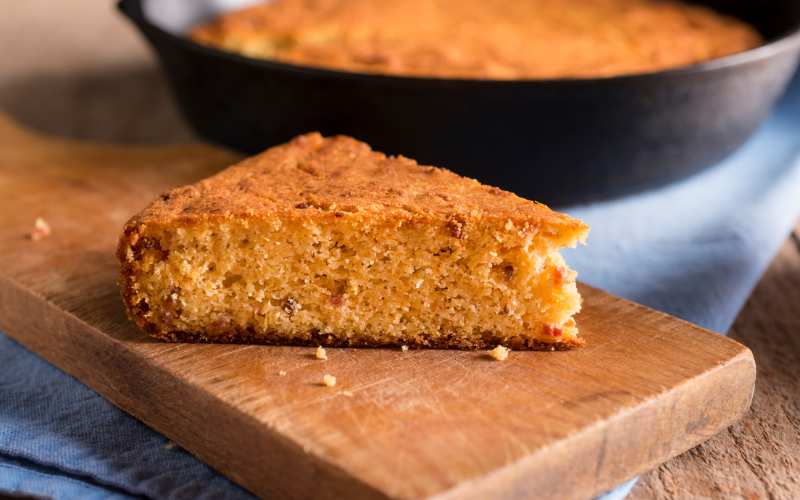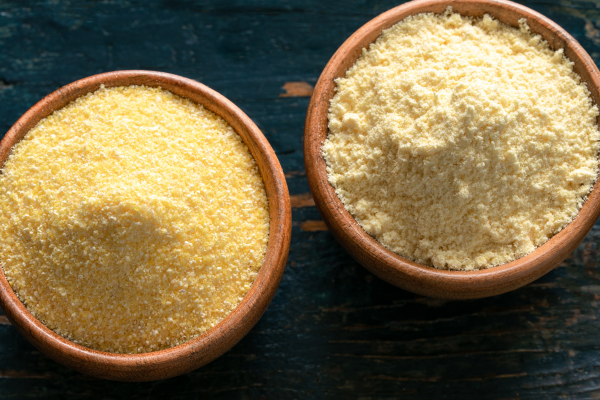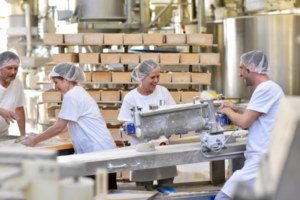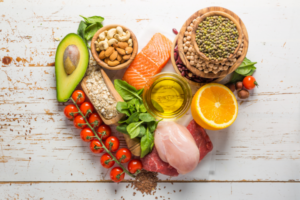staple ingredients: cornmeal & Cornflour
Cornmeal and cornflour are staple ingredients in many kitchens, especially in baking and cooking. Both originate from dried corn kernels but undergo different processing, creating distinct textures and uses.
The Applications of Cornmeal
Dried corn is ground into coarse flour to make cornmeal. It varies in texture from fine to coarse and is often used for baking cornbread, muffins, and coating fried foods. The texture of cornmeal adds a pleasant crunch to dishes. In the Southern United States, yellow cornmeal is particularly popular for making cornbread.
The Applications of Cornflour
Corn flour is finely ground cornmeal, resulting in a smooth, powdery texture. It’s used as a thickening agent in soups and sauces and in baking to produce delicate, fine-textured goods. In the United States, corn flour refers to this finely ground product, whereas in the United Kingdom, “cornflour” often refers to what is known as cornstarch in the U.S.
Key Differences Between the Two Ingredients
Texture: Cornmeal features a gritty texture, while processors grind corn flour finely to achieve a smooth consistency.
Culinary Uses: Cornmeal is ideal for baked goods like cornbread and as a crispy coating for fried foods. Corn flour is better suited for thickening sauces and baking recipes that require a fine texture.
Processing: Both are made from dried corn, but the degree of grinding differs, with corn flour being ground more finely than cornmeal.
Appetizing Cornmeal & Cornflour Recipes
Cornmeal Recipe: Classic Cornbread
Ingredients:
- 1 cup yellow cornmeal
- 1 cup all-purpose flour
- 1/4 cup granulated sugar
- 1 tablespoon baking powder
- 1/2 teaspoon salt
- 1 cup milk
- 1/3 cup vegetable oil or melted butter
- 1 large egg
Instructions:
- Preheat the oven to 400°F (200°C). Grease an 8-inch square baking pan or line with parchment paper.
- Mix dry ingredients: In a large bowl, combine cornmeal, flour, sugar, baking powder, and salt.
- Combine wet ingredients: In another bowl, whisk together milk, oil (or butter), and egg until smooth.
- Combine wet and dry: Gradually add the wet ingredients to the dry mixture, stirring until just combined. Avoid overmixing.
- Bake: Pour the batter into the prepared pan and bake for 20-25 minutes, or until a toothpick inserted into the center comes out clean.
- Cool and serve: Let the cornbread cool slightly before slicing. Serve warm with butter or honey.

Corn Flour Recipe: Gluten-Free Corn Flour Pancakes
Ingredients:
- 1 cup corn flour
- 1/4 cup tapioca flour (or cornstarch)
- 1 tablespoon sugar
- 1 teaspoon baking powder
- 1/4 teaspoon salt
- 1 large egg
- 1 cup milk (or plant-based alternative)
- 1 tablespoon melted butter or oil
- 1 teaspoon vanilla extract
Instructions:
- Mix dry ingredients: In a medium bowl, whisk together corn flour, tapioca flour, sugar, baking powder, and salt.
- Prepare wet ingredients: In a separate bowl, whisk together the egg, milk, melted butter (or oil), and vanilla extract.
- Combine: Pour the wet ingredients into the dry ingredients and mix until smooth. Let the batter rest for 5-10 minutes to thicken slightly.
- Cook pancakes: Heat a non-stick skillet or griddle over medium heat and lightly grease with butter or oil. Pour 1/4 cup of batter for each pancake onto the skillet. Cook until bubbles form on the surface, about 2 minutes, then flip and cook another 1-2 minutes until golden brown.
- Serve: Stack the pancakes and serve with maple syrup, fresh fruit, or a dollop of yogurt.
Conclusion
Understanding the difference between cornmeal and corn flour is essential for achieving the desired texture and flavor in your recipes. Selecting the appropriate product can enhance your culinary creations, whether you’re aiming for the crunch of cornbread or the smoothness of a finely baked cake.



